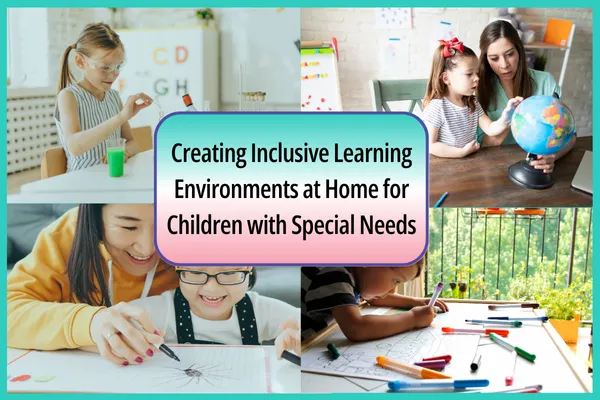
Creating Inclusive Learning Environments at Home for Children with Special Needs
Parenting a child with special needs means you are not only an advocate at school but also a key facilitator of learning at home. The home environment plays a crucial role in supporting your child's growth, self-confidence, and academic progress. Creating an inclusive learning environment tailored to your child's unique needs helps them feel safe, understood, and empowered to learn.

Why Home Environment Matters
Your child spends a significant amount of time at home, and this setting shapes how they approach learning, behavior, and social interactions. An inclusive home learning environment supports continuity with the strategies used at school and offers a space for practice and growth.
For children with special needs, a calm and organized space can reduce sensory overload, provide predictability, and foster independence. The environment sets the stage for success by making learning accessible, engaging, and comfortable.
Understanding Your Child’s Unique Sensory and Learning Needs
Every child with special needs has different sensory preferences and learning styles. Some may be sensitive to noise, light, or touch; others may need frequent movement breaks or hands-on learning. Observe how your child reacts to different stimuli and environments:
Does your child get overwhelmed by loud sounds or bright lights?
Do they focus better with soft background music or in silence?
What kinds of activities engage their interest most effectively?
Do they learn best visually, through movement, or by listening?
Understanding these nuances helps you tailor the home environment to support your child’s learning.
Organizing Your Home for Focus and Calmness
Creating a dedicated learning space helps your child associate the area with focus and learning. Here are some tips:
Choose a quiet, low-traffic area where distractions are minimal.
Use calming colors and natural light to create a peaceful atmosphere.
Organize materials and supplies so everything your child needs is easy to find.
Incorporate comfortable seating and adjustable furniture to meet sensory needs.
Limit clutter and keep surfaces clear to reduce overstimulation.

Consistency matters. Keeping the learning area organized and ready encourages your child to approach study time with a positive mindset.
Using Assistive Technology and Sensory Tools
Technology and sensory tools can enhance learning and help meet specific needs. Depending on your child’s abilities and challenges, you might consider:
Tablets or communication devices for augmentative and alternative communication (AAC).
Apps for organization, reading, or math skills designed for children with special needs.
Noise-canceling headphones to reduce auditory distractions.
Fidget tools or stress balls to support focus and self-regulation.
Weighted blankets or lap pads for calming proprioceptive input.
Work with therapists or educators to find tools suited to your child.
Positive Behavior Strategies and Setting Consistent Routines
Children with special needs often thrive on routine and clear expectations. Establishing consistent daily routines at home helps:
Reduce anxiety by providing predictability.
Promote independence through step-by-step schedules.
Reinforce positive behavior by using clear and consistent consequences.
Use visual schedules, timers, or reward charts to support understanding. Celebrate successes and be patient with setbacks.

Encouraging Family Involvement and Inclusive Activities
Learning is a social experience. Include siblings and family members in activities that promote understanding and inclusion:
Engage in family games that support social skills and turn-taking.
Plan outings or community activities adapted to your child’s interests and sensory needs.
Model patience, empathy, and positive communication.
Fostering a supportive family culture helps your child build confidence and social connections.
Adapting Over Time as Needs Change
Children grow and change, and so will their needs. Regularly reassess your home environment and adapt accordingly:
Modify sensory tools and schedules as your child develops new skills.
Add or remove assistive devices as needed.
Stay informed about new strategies and resources.
Flexibility paired with consistency is key to long-term success.
Final Thoughts
Creating an inclusive learning environment at home is a powerful way to support your child’s education and well-being. With thoughtful observation, organization, and use of tools and routines, you can build a space where your child feels safe, motivated, and capable. Your commitment as a parent is the foundation upon which your child can flourish.

